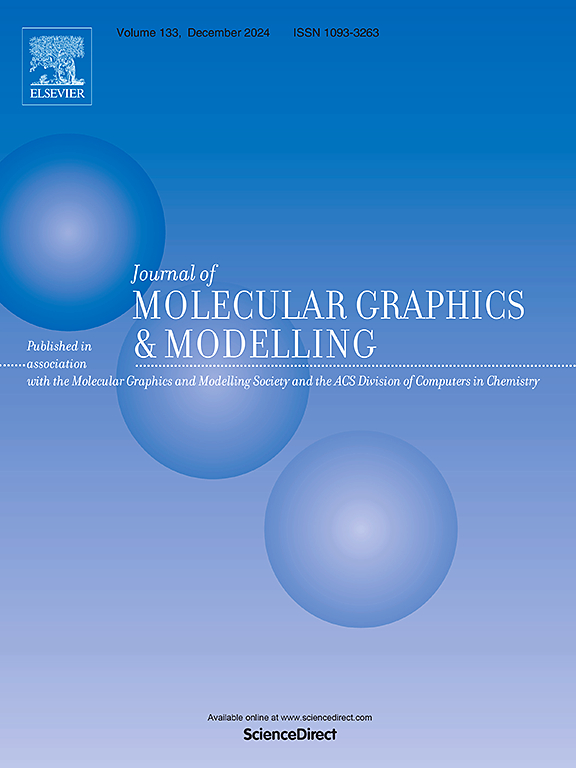A DFT study of physical properties of the new Cr2S2BrCl material
IF 3
4区 生物学
Q2 BIOCHEMICAL RESEARCH METHODS
引用次数: 0
Abstract
Using first-principles calculations, this study comprehensively investigates the structural, magnetic, electronic, optical, and thermodynamic properties of the newly material Cr2S2BrCl compound. The crystal structure was optimized, and the exchange-correlation interactions were modeled using the GGA + SOC + U approximation to capture the material's electronic structure accurately. Our magnetic analysis reveals significant spin polarization, with Cr atoms contributing dominantly to the overall magnetic moment, further supported by computed partial and total magnetic moments. The electronic density of states (DOS) and band structure calculations show that Cr2S2BrCl possesses a spin-dependent band gap. The optical properties, including the dielectric function and absorption coefficient, were evaluated, demonstrating strong absorption in the visible range, making this compound a candidate for optoelectronic devices. Additionally, thermoelectric properties, including the Seebeck coefficient, electrical conductivity, electronic thermal conductivity, figure of merit, electronic specific heat, and Pauli magnetic susceptibility, were evaluated.

新型Cr2S2BrCl材料物理性能的DFT研究
本研究利用第一性原理计算,全面研究了新材料Cr2S2BrCl化合物的结构、磁性、电子、光学和热力学性质。对晶体结构进行了优化,并采用GGA + SOC + U近似建立了交换相关相互作用模型,以准确捕获材料的电子结构。我们的磁性分析显示了显著的自旋极化,Cr原子对总磁矩的贡献占主导地位,进一步得到了计算的部分和总磁矩的支持。电子态密度(DOS)和能带结构计算表明,Cr2S2BrCl具有自旋相关带隙。光学性质,包括介电函数和吸收系数,被评估,显示在可见光范围内强吸收,使该化合物成为光电器件的候选。此外,还评估了热电性能,包括塞贝克系数、电导率、电子导热系数、优点系数、电子比热和泡利磁化率。
本文章由计算机程序翻译,如有差异,请以英文原文为准。
求助全文
约1分钟内获得全文
求助全文
来源期刊

Journal of molecular graphics & modelling
生物-计算机:跨学科应用
CiteScore
5.50
自引率
6.90%
发文量
216
审稿时长
35 days
期刊介绍:
The Journal of Molecular Graphics and Modelling is devoted to the publication of papers on the uses of computers in theoretical investigations of molecular structure, function, interaction, and design. The scope of the journal includes all aspects of molecular modeling and computational chemistry, including, for instance, the study of molecular shape and properties, molecular simulations, protein and polymer engineering, drug design, materials design, structure-activity and structure-property relationships, database mining, and compound library design.
As a primary research journal, JMGM seeks to bring new knowledge to the attention of our readers. As such, submissions to the journal need to not only report results, but must draw conclusions and explore implications of the work presented. Authors are strongly encouraged to bear this in mind when preparing manuscripts. Routine applications of standard modelling approaches, providing only very limited new scientific insight, will not meet our criteria for publication. Reproducibility of reported calculations is an important issue. Wherever possible, we urge authors to enhance their papers with Supplementary Data, for example, in QSAR studies machine-readable versions of molecular datasets or in the development of new force-field parameters versions of the topology and force field parameter files. Routine applications of existing methods that do not lead to genuinely new insight will not be considered.
 求助内容:
求助内容: 应助结果提醒方式:
应助结果提醒方式:


